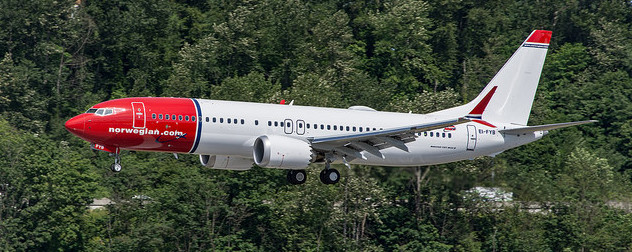Last month my wife and I flew from Newburgh, New York to Edinburgh, Scotland on Norwegian Air Shuttle. It was one of the most uncomfortable commercial flights I have ever taken.
Now it also appears that it was one of the most dangerous, although that was not the airline’s fault.
In addition to the airline’s budget-stretching thin seats that don’t recline in the exit row, the Boeing 737 MAX plane we flew included new anti-stall features – features that Boeing failed to bring to the attention of airlines or pilots. Investigators and pilots unions said that no manuals or other materials contained the crucial information that the new features could force an aircraft’s nose down in certain situations to prevent stalling. A recent directive from the U.S. Federal Aviation Administration indicated that certain inputs could force a plane to descend sharply for up to 10 seconds even in manual flight, which Boeing did not bother to mention to the people who buy and fly these aircraft.
There were no changes in pilot training, either. In fact, one of the selling features of the 737 MAX is that pilots trained on older versions of the workhorse 737 need no additional simulator time. A high-ranking Boeing official reportedly told The Wall Street Journal that the company did not want to disclose too many details to cockpit crews, because it worried about overwhelming them with more technical data than they needed.
Now Indonesian officials have said that the anti-stall features, and the pilots’ unfamiliarity with how to address them, may have played a role in October’s fatal crash of a Lion Air flight in Indonesia that killed all 189 people on board.
The MAX series only entered commercial service last year. There are many orders but not too many deliveries yet; production delays created a big backlog. The main carriers using the MAX in the U.S. are Southwest Airlines (which has an all-737 fleet, including 26 MAX 8 aircraft) and United Airlines, though American Airlines has started to add them as well. Foreign airlines using them, besides Norwegian and Lion, include Air Canada, WestJet (also Canada), Copa Airlines (Panama, with many Western Hemisphere destinations), flydubai, Air China, China Southern Airlines, China Eastern Airlines, Shanghai Airlines and SilkAir (Singapore).
An anonymous Boeing executive told the Seattle Times that the change to the flight control system was necessary to certify the jet as safe. Because the 737 MAX has significantly larger engines than its predecessors, the conditions under which a stall could happen are different than on older 737s. In theory, pilots should have never interacted with the new system. But that is no excuse for not informing pilots how to cope with a malfunction. The “startle factor” – mistakes born out of surprise at a particular malfunction or other problem – can be deadly in aviation.
My employees and I do a lot of travel for work. As soon as the news broke, I instructed our travel booking staff to check the scheduled equipment for every flight we consider on any affected airline. Anytime the scheduled plane is a 737 MAX, our administrative staff will not book the flight. It is not worth the risk to my staff’s safety; we will make alternative arrangements when necessary. While my family makes their own travel decisions, I alerted them to this issue too and strongly encouraged them to avoid these aircraft for now.
Checking the aircraft at booking is not a foolproof system; there can always be equipment substitutions. But until corrective measures are in place, our firm will do as much as we can to avoid the 737 MAX. It will take time to identify and fix what went wrong with the new system and to provide appropriate manuals to airlines and training to pilots. Boeing is also reportedly working on a software fix that will mitigate some of the risk of the new system.
Boeing’s behavior is inexcusable. It is also staggeringly foolish. Calling the new planes the 737-OMG is only the mildest inevitable public response. Pilots and passengers alike have both rightly questioned what other information Boeing may not have shared. Jon Weaks, president of the Southwest Airlines Pilots Association, put it succinctly: “It makes us question, ‘Is that everything, guys?’ I would hope there are no more surprises out there.”
In a statement, Boeing said “Safety remains our top priority and is a core value for everyone at Boeing.” But the manufacturer’s commitment to safety and transparency is now justifiably called into question, because the secrecy about these new systems was doubtless intended at least in part to improve Boeing’s competitive position against its longtime rival Airbus. Now, not only is it more comforting to fly on an Airbus aircraft, but Boeing has opened a competitive door for China, which is working on its own narrow-body competitor to the smaller 737s. It would be a plus for Brazil’s Embraer too, except that Boeing bought control of Embraer’s commercial jet unit a few months ago.
Assuming Boeing is not keeping more secrets, the problems with the 737 MAX can be resolved with pilot training, better documentation and improved software. The problems with Boeing’s reputation will not be resolved so easily.









November 18, 2018 - 11:04 pm
I would suspect the mild public response is because news media are on retainers from PR firms to downplay the seriousness. If news media do not play their role to alert the public, but instead publish attacks on the competence of Lion Air the general public are unlikely to question Boeing